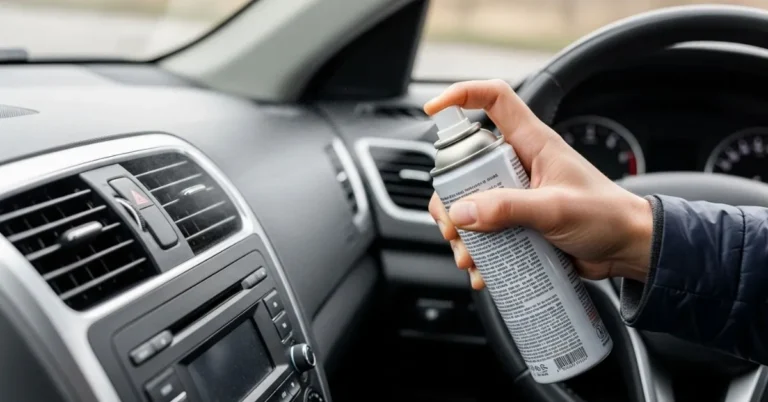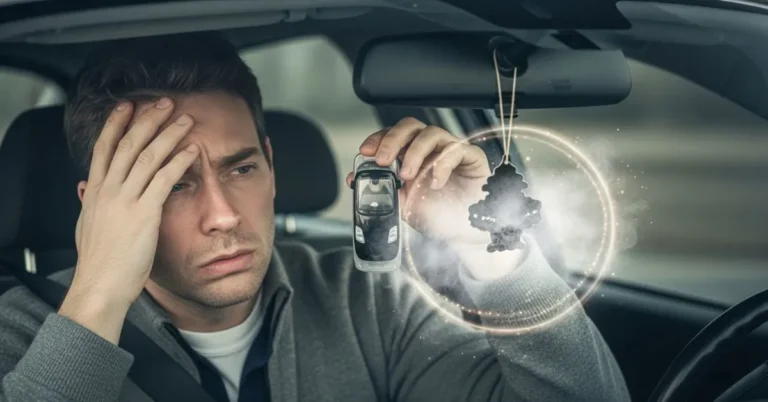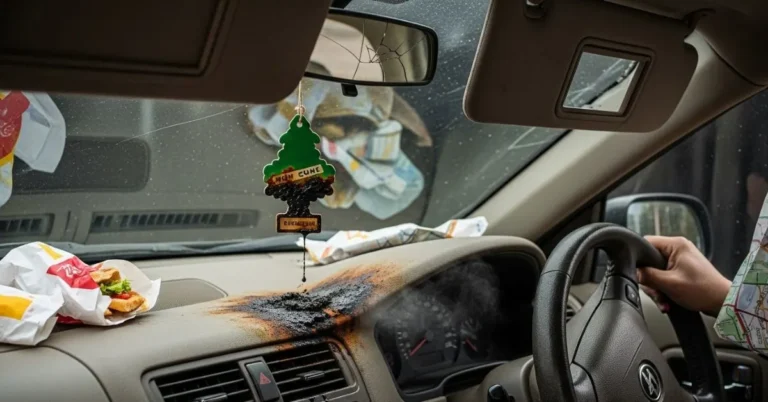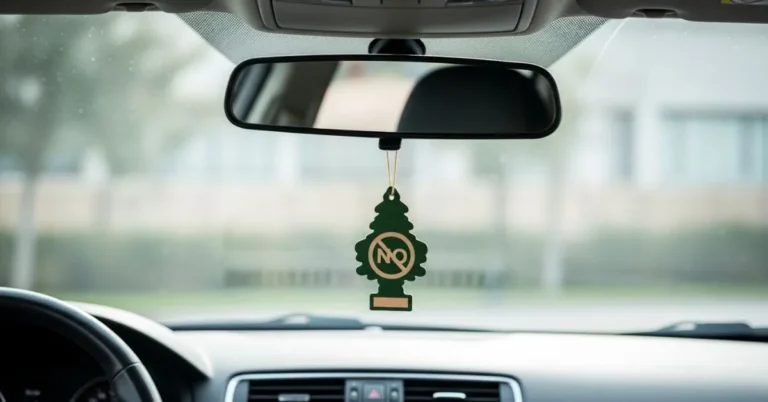
Let me take you back to a chilly Saturday morning the kind where you find yourself wondering where to put GPS antenna on new install while crouched under the dashboard of your buddy Kevin’s shiny new SUV. I was armed with zip ties, a trim tool, and enough caffeine to survive a wiring marathon. Kevin had just bought a top-of-the-line GPS navigation unit, and his main question echoed by many DIY car lovers was:
“Where should I put the GPS antenna on this new install?”
Not the screen. Not the cable. The antenna.
Trust me, where you place your GPS antenna can make or break your entire navigation experience. Put it in the wrong place, and your screen will show you in a lake when you’re on the highway. Put it in the right spot, and you’ll glide smoothly from A to B, no matter how rural the road or urban the jungle.
So, let’s get into it. Whether you’re a weekend warrior with a toolbox or just trying to install your new GPS unit without losing your sanity, this guide will help you nail down exactly where to put the GPS antenna on the latest car installation like a pro.
Contents
- 1 Why Antenna Placement Is a Big Deal
- 1.1 Understand Your GPS Antenna Type First
- 1.2 Best Locations: Where to Put GPS Antenna on New Install in Car
- 1.2.1 1. On the Roof – Center Rear for Peak Performance
- 1.2.2 2. Avoid These Poor Signal Zones
- 1.2.3 3. Clean Surface = Cleaner Signal
- 1.2.4 4. Dashboard Placement – The Quick and Easy Way
- 1.2.5 5. Rear Parcel Shelf (for Sedans & Coupes)
- 1.2.6 6. Under the Headliner (Stealth Mode Activated)
- 1.2.7 8. A-Pillar (Near the Windshield Edge)
- 1.2.8 9. Test Before You Commit (GPS Signal Strength Apps)
- 1.2.9 10. Cable Management: The Silent Hero
- 1.3 Soft Product Suggestions (Informational Only)
- 1.4 Bonus: Trends, Sustainability & Safety Notes
- 1.5 FAQs – Where to Put GPS Antenna on New Install in a Car
- 1.6 Expert Thoughts: Choose Placement Like a Pro
- 1.7 About the Author
Why Antenna Placement Is a Big Deal
If you’re picturing the antenna as a little black box, you can toss it anywhere, so pause.
Here’s the deal:
- GPS antennas work by communicating with satellites orbiting the Earth.
- They need a clear, unobstructed view of the sky to do this.
- Putting the antenna in the wrong spot means a weaker signal, laggy location updates, and route errors.
You wouldn’t wear sunglasses in a pitch-black room, and the same principle applies. A GPS antenna in a “blocked” spot can’t be seen properly.
Understand Your GPS Antenna Type First
Before you install anything, check what kind of GPS antenna you’re dealing with:
➤ 1. External GPS Antenna (Wired)
- Comes with a magnetic or adhesive base and a long coaxial cable.
- Offers flexible mounting options (roof, dash, rear window, etc.).
- Most accurate when mounted externally.
➤ 2. Internal GPS Antenna (Built-In)
- Found in all-in-one dash cams, stereo head units, or plug-and-play GPS devices.
- Placement still matters, but you’re more limited.
This blog focuses mainly on external antennas, since placement is critical, but we’ll also sprinkle in tips for internal units.
Read More: Where to Mount GPS Antenna on Car: Best Locations Explained
Best Locations: Where to Put GPS Antenna on New Install in Car
Now that we’ve covered the “why,” let’s break down the “where.”
1. On the Roof – Center Rear for Peak Performance
If your car has a metallic roof (most do) and your GPS antenna has a magnetic base, congratulations! you’ve got the dream setup.
Best spot: The rear center of the car roof.
Why?
- Maximum sky exposure.
- Minimal obstructions from the engine or interior components.
- Reduces interference from dash electronics.
Pro Tip: Route the wire through the trunk seal or rear hatch weatherstrip to keep the install clean. Avoid pinching the cable!
2. Avoid These Poor Signal Zones
While figuring out where to put GPS antenna on new install in car, do not fall into these classic traps:
- Behind or beneath metal surfaces (they block the signal).
- Directly under the dashboard.
- Near metallic tinted windshields or heated glass with embedded filaments.
- Next to high-voltage car components like the ECU or amplifier.
These areas are GPS dead zones, plain and simple.
3. Clean Surface = Cleaner Signal
Before placing your antenna:
- Wipe the mounting area with alcohol (or mild cleaner).
- Avoid waxed, ceramic-coated, or dusty surfaces.
- Use a protective pad if the antenna base might scratch paint.
This is especially important for magnetic mounts no one wants a GPS installation that doubles as a scratch generator.
4. Dashboard Placement – The Quick and Easy Way
This is the most common go-to, especially for internal antennas. It works but with caveats.
When it works best:
- Your car doesn’t have a metalized or heated windshield.
- The dashboard surface is flat and not too deep under the windscreen.
- The GPS unit is centrally located and not near vents or metal trim.
Drawbacks:
- You may experience signal loss if the windshield blocks satellite signals.
- Not ideal in urban areas with lots of tall buildings.
Smart Move: Download a GPS signal tester app and leave your phone in the same spot to simulate antenna performance.
5. Rear Parcel Shelf (for Sedans & Coupes)
This is a goldmine of stealth and performance for sedans with that empty shelf behind the back seats (under the rear windshield).
- Great sky view through the rear window.
- Easy to hide the antenna.
- Cable can be routed cleanly under the seat trim.
But beware: Rear defrosters (those lines on the rear glass) can slightly interfere with the signal.
6. Under the Headliner (Stealth Mode Activated)
Want an install so clean no one even knows it’s there?
Slide the antenna under the headliner, near the front or rear edge of the roof.
Pros:
- Hidden, protected from the elements.
- High mounting point for a great signal.
Cons:
- Trickier install.
- Some headliners contain metallic layers that might reduce signal; test first.
7. Trunk Lid – External Mount for Discreet Placement
Another pro move is to place the antenna inside the trunk lid, especially if you don’t want it visible on the roof.
Why it works:
- Elevated height.
- The rear window doesn’t block the satellite signal as much.
- Easily accessible cable routing.
Use a low-profile cable grommet or route through existing rubber seals to protect wires from wear.
8. A-Pillar (Near the Windshield Edge)
The plastic panel that runs alongside your windshield? That’s the A-pillar, and it can work as a creative mounting zone.
Good for:
- Internal GPS units (stuck near the windshield).
- Easy cable hiding.
Not good if:
- The pillar contains curtain airbags.
- It has metallic reinforcement inside.
Double-check your car manual before trying this.
9. Test Before You Commit (GPS Signal Strength Apps)
Before making the antenna permanent, take it for a test drive:
- Temporarily mount the antenna in your chosen spot.
- Use a GPS signal meter app (many free versions exist).
- Drive around and observe:
- Time to acquire satellite lock
- Consistency of location tracking
- Speed and direction accuracy
You’d be surprised how two inches can make all the difference.
10. Cable Management: The Silent Hero
Nothing screams amateur like a GPS wire hanging across the dash like spaghetti.
Proper cable management:
- Prevents damage from doors and moving parts.
- Avoids signal interference.
- It makes the whole installation cleaner and more professional.
Use:
- Adhesive clips
- Zip ties
- Wire loom
- Trim tools for tucking behind panels
Bonus: A well-hidden install also keeps your tech safe from theft.
Soft Product Suggestions (Informational Only)
You don’t need fancy gear, but a few tools can make the job smoother:
| Product | Why It Helps |
| Magnetic GPS Antenna Mounts | Ideal for roof or trunk installs and are damage-free. |
| Cable Routing Trim Tools | Pry panels without breaking clips or scratching. |
| GPS Signal Strength Meters | Help test the best antenna location. |
| Double-sided adhesive pads | For secure mounting on the dash. |
All of these are affordable, reusable, and beginner-friendly.
Bonus: Trends, Sustainability & Safety Notes
Sustainability Tip: Use reusable mounting options and avoid drilling holes or applying permanent adhesives unless necessary.
Tech Trend: Many 2025 dash cams and stereo units now feature internal GPS, but placement still affects signal quality. Always test!
Safety First: Don’t route cables near airbags, pedals, or gear shifters. Tidy cables = safe driving.
Read More: How to Find a GPS Tracking Device on Your Car: Expert Tips
FAQs – Where to Put GPS Antenna on New Install in a Car
1. Can I install the GPS antenna under the dashboard?
Yes, but it’s not ideal. Signal strength will likely suffer, especially if your car has a lot of metal or heat shielding under the dash.
2. Will metallic window tint block GPS signals?
Yes. Tinting with metallic film can interfere with satellite signals. If your windshield is tinted, avoid placing the antenna near it.
3. Is the trunk lid a good place to install the antenna?
Absolutely. It’s a discreet yet elevated location with minimal signal interference, especially if your roof isn’t an option.
4. How do I know if my antenna has a good signal?
Use a GPS signal app or the built-in GPS diagnostics screen (if available). Test the antenna in different locations before finalizing.
5. Can I mount the antenna inside the car?
Yes, especially for internal antenna units. Just ensure minimal metal or interference between the antenna and the sky.
Expert Thoughts: Choose Placement Like a Pro
If you’ve been wondering where to put GPS antenna on new installation in car, now you’ve got options smart, tested, and DIY-approved.
Best bet? Roof or rear parcel shelf.
Cleanest look? Under the headliner or A-pillar.
Quickest route? Dashboard (with good testing).
Just remember:
- Always test before you commit
- Use tools that protect your car’s trim and electronics
- Keep sustainability and safety in mind
With some planning and the right placement, your GPS unit will be locked, loaded, and pointing true north without rerouting you through the Bermuda Triangle.





